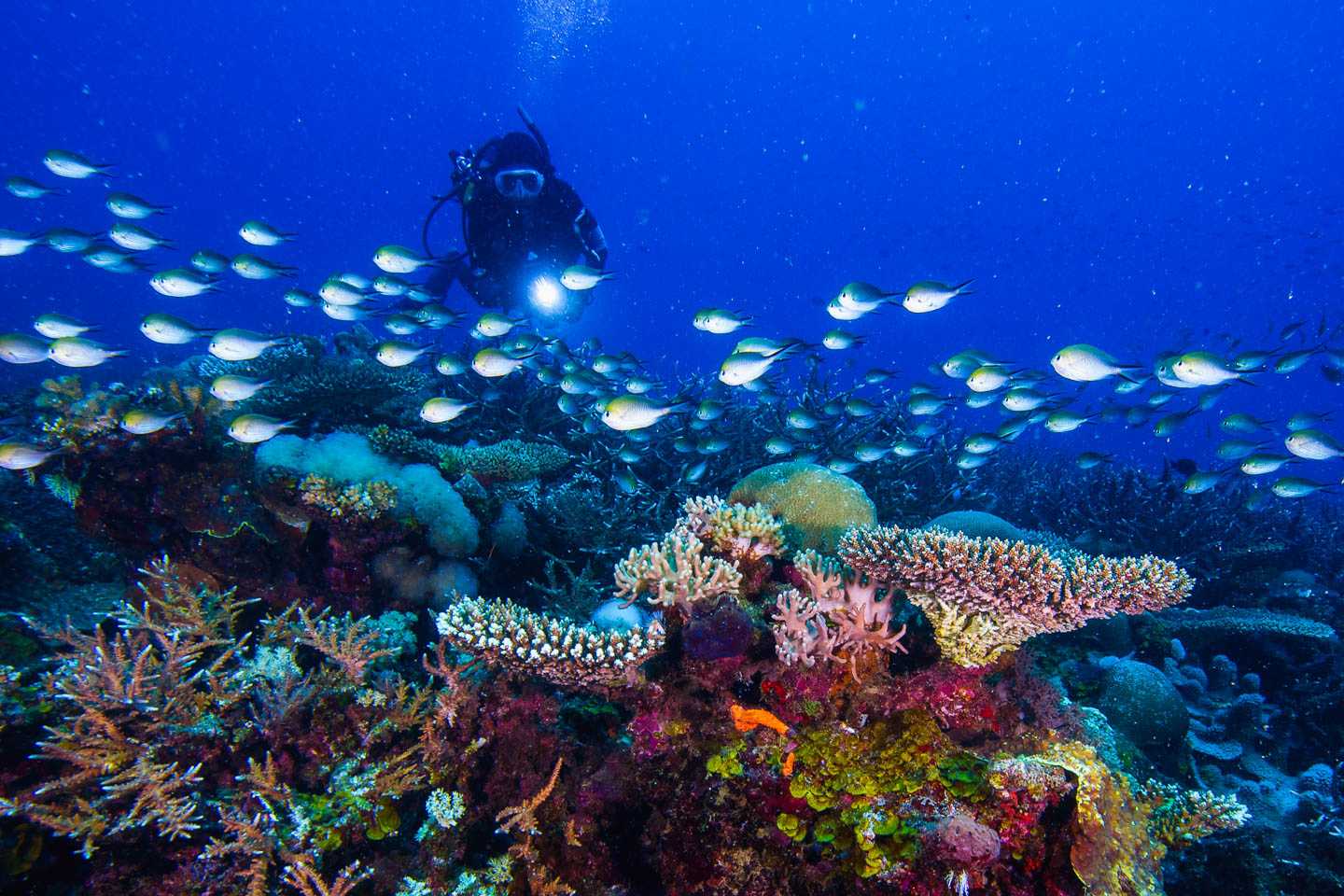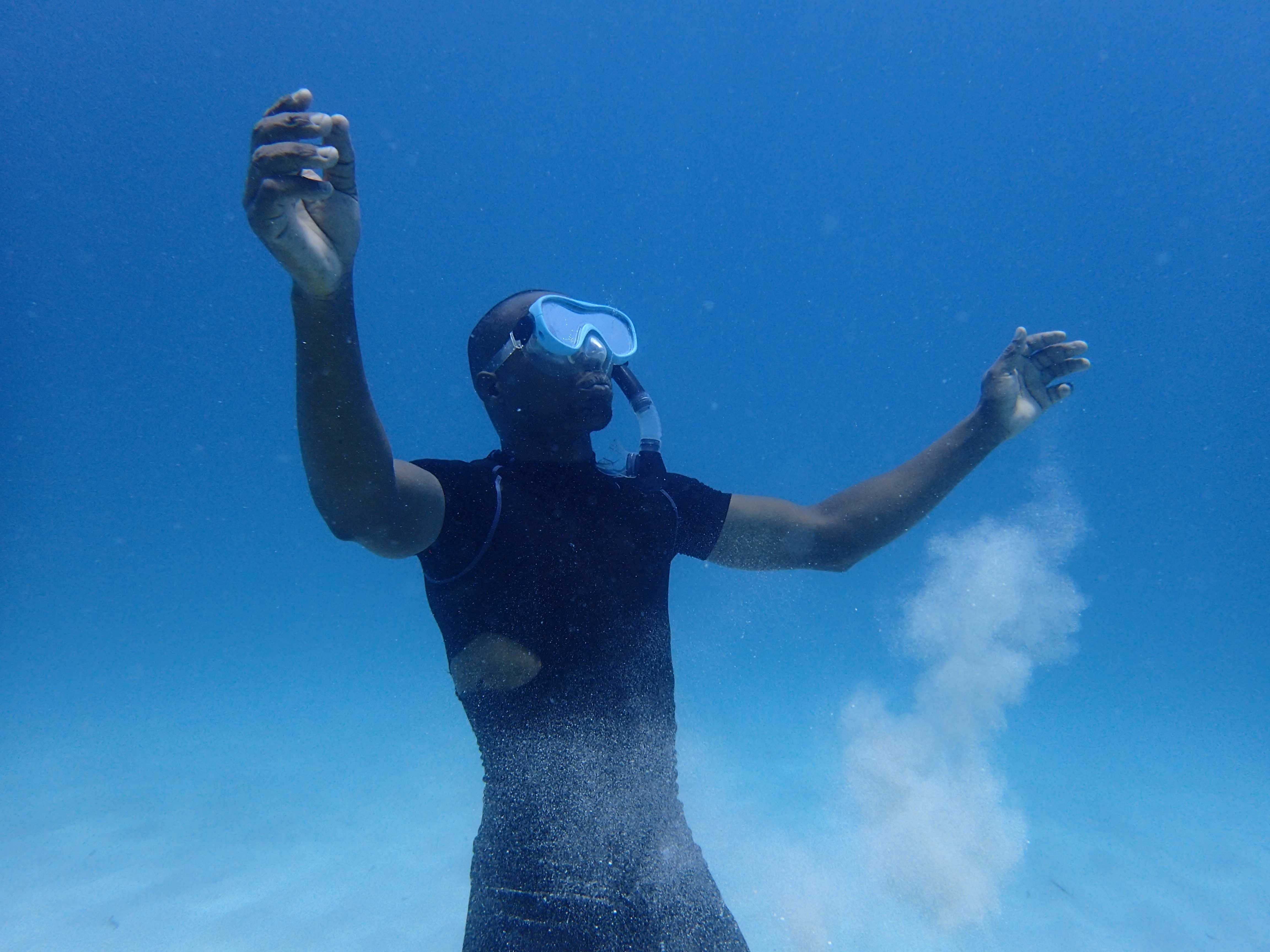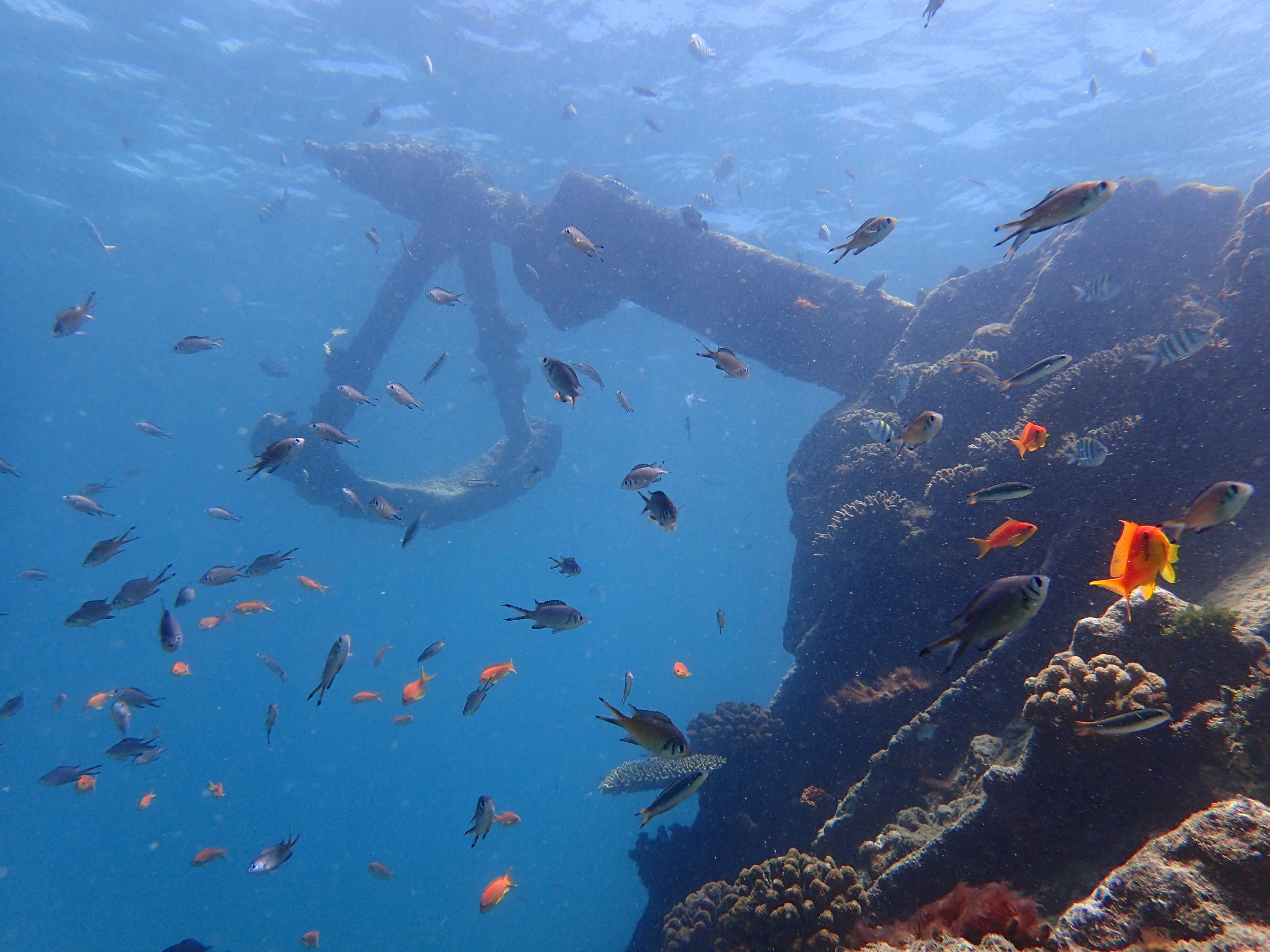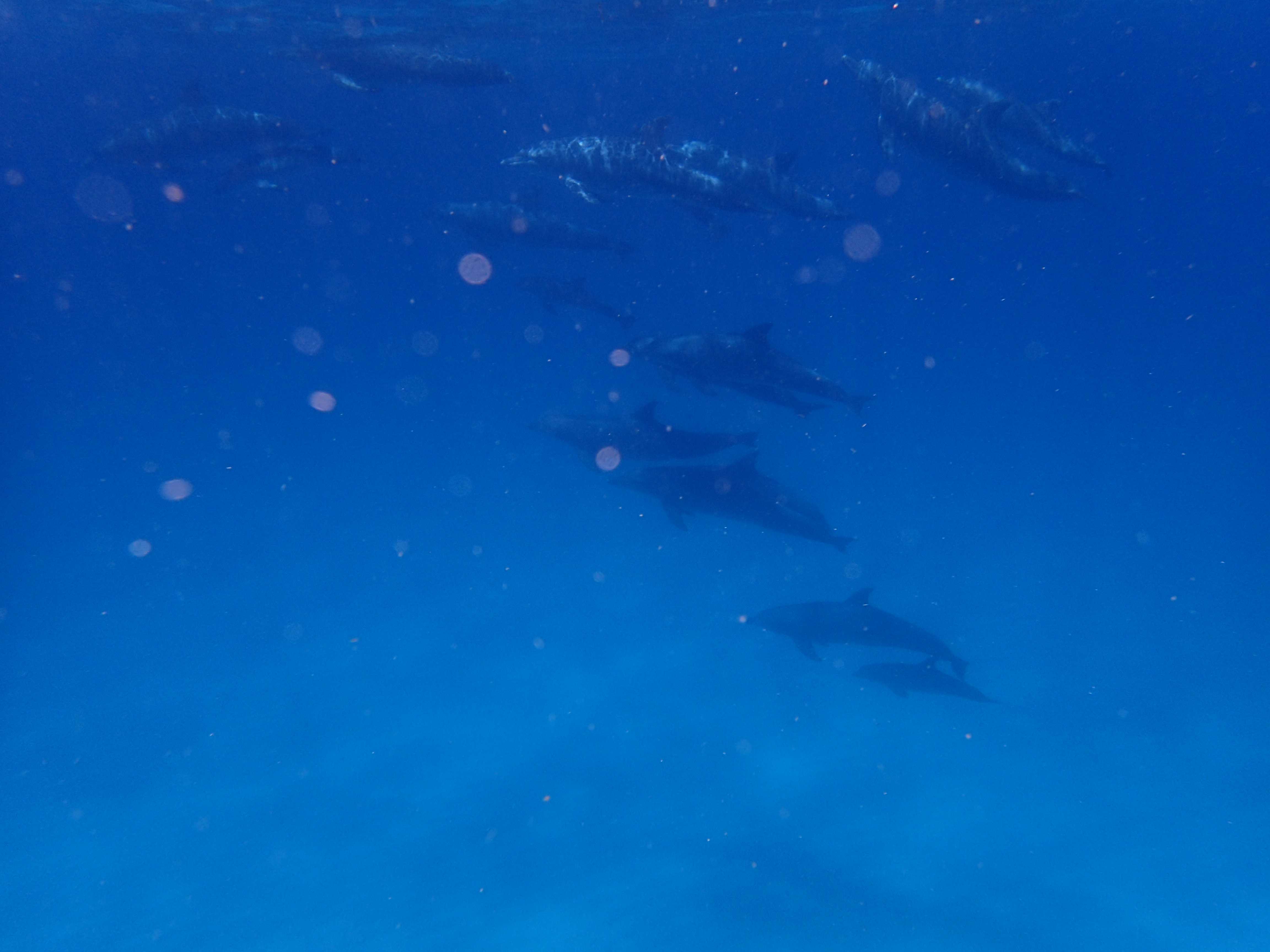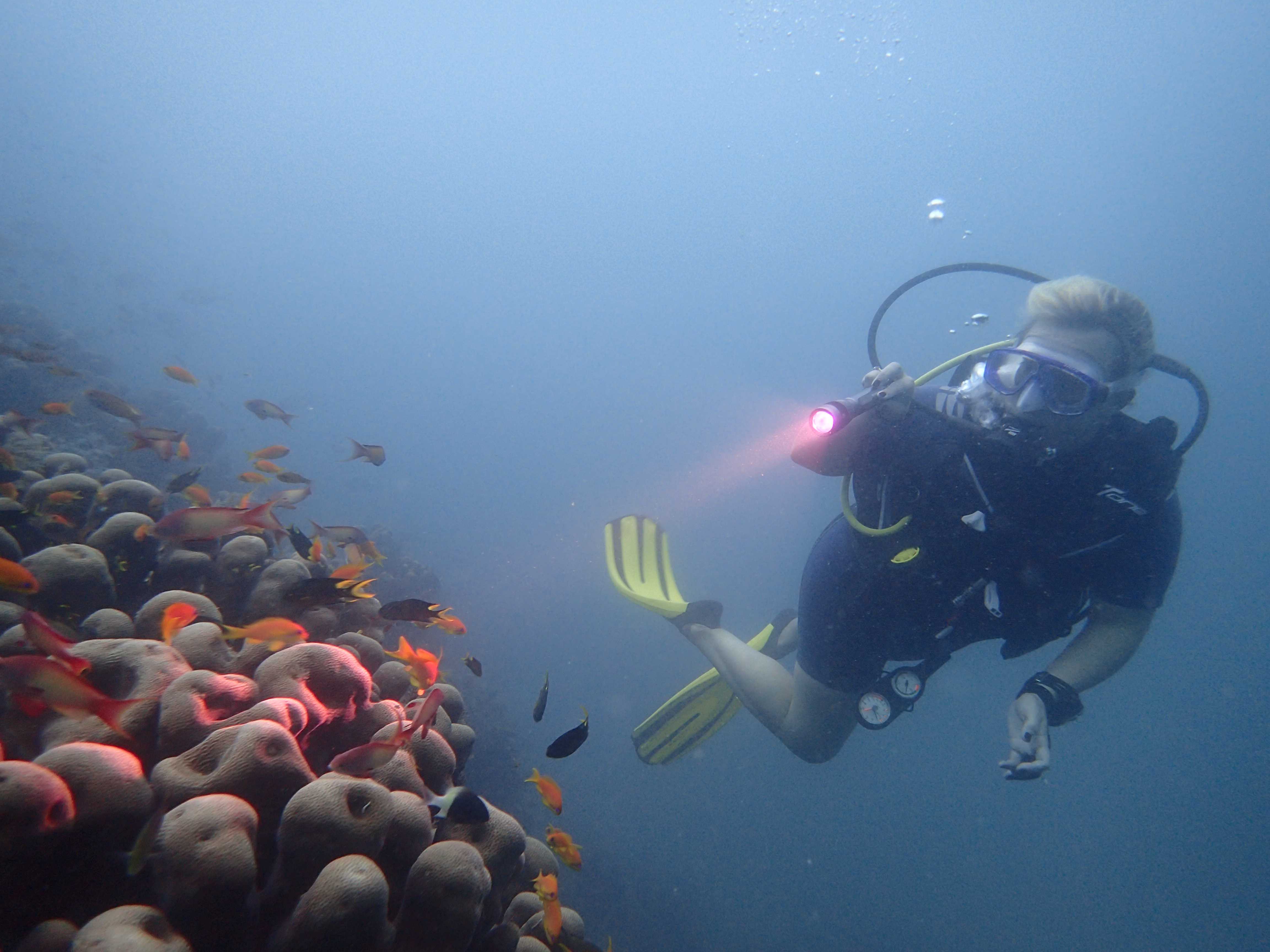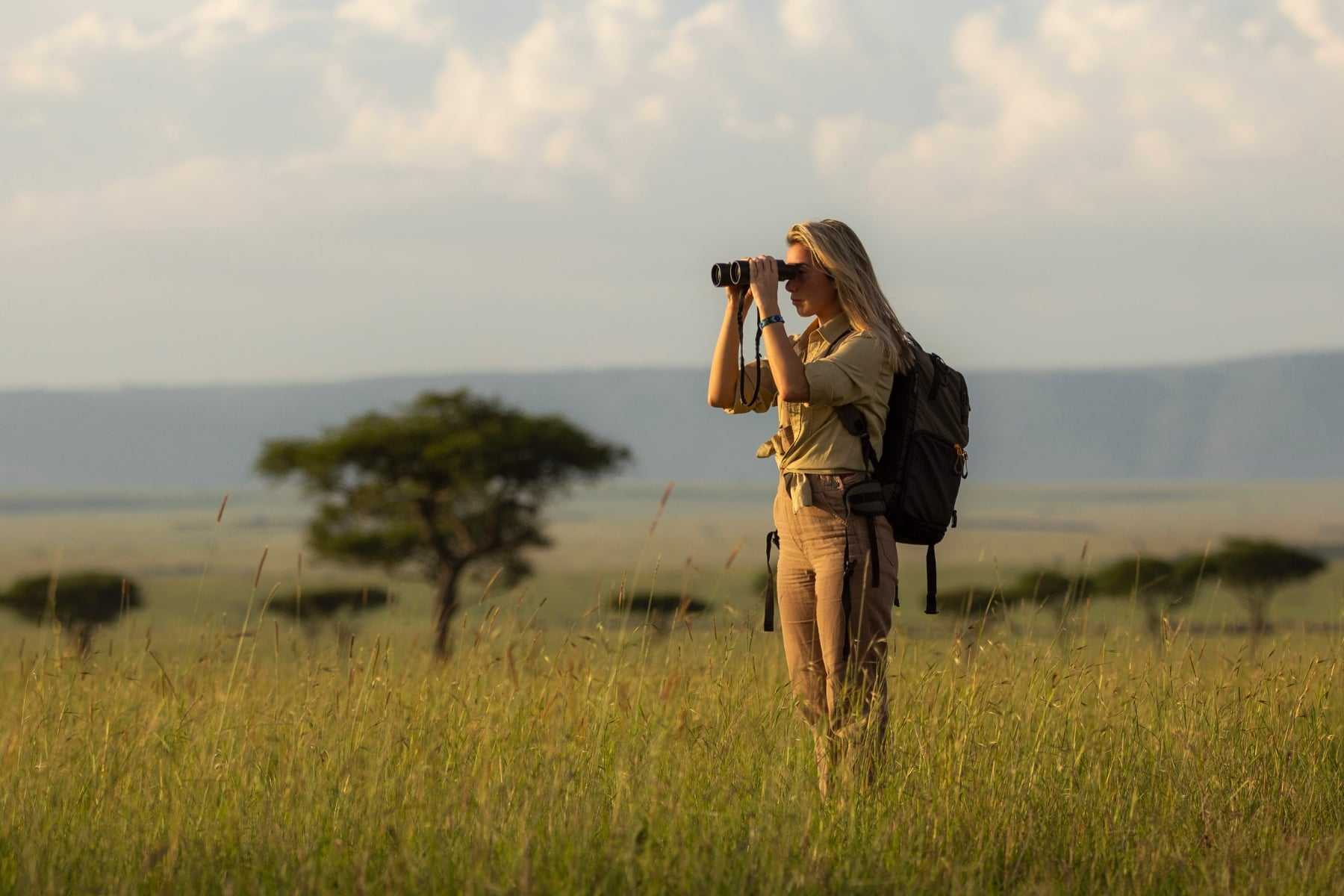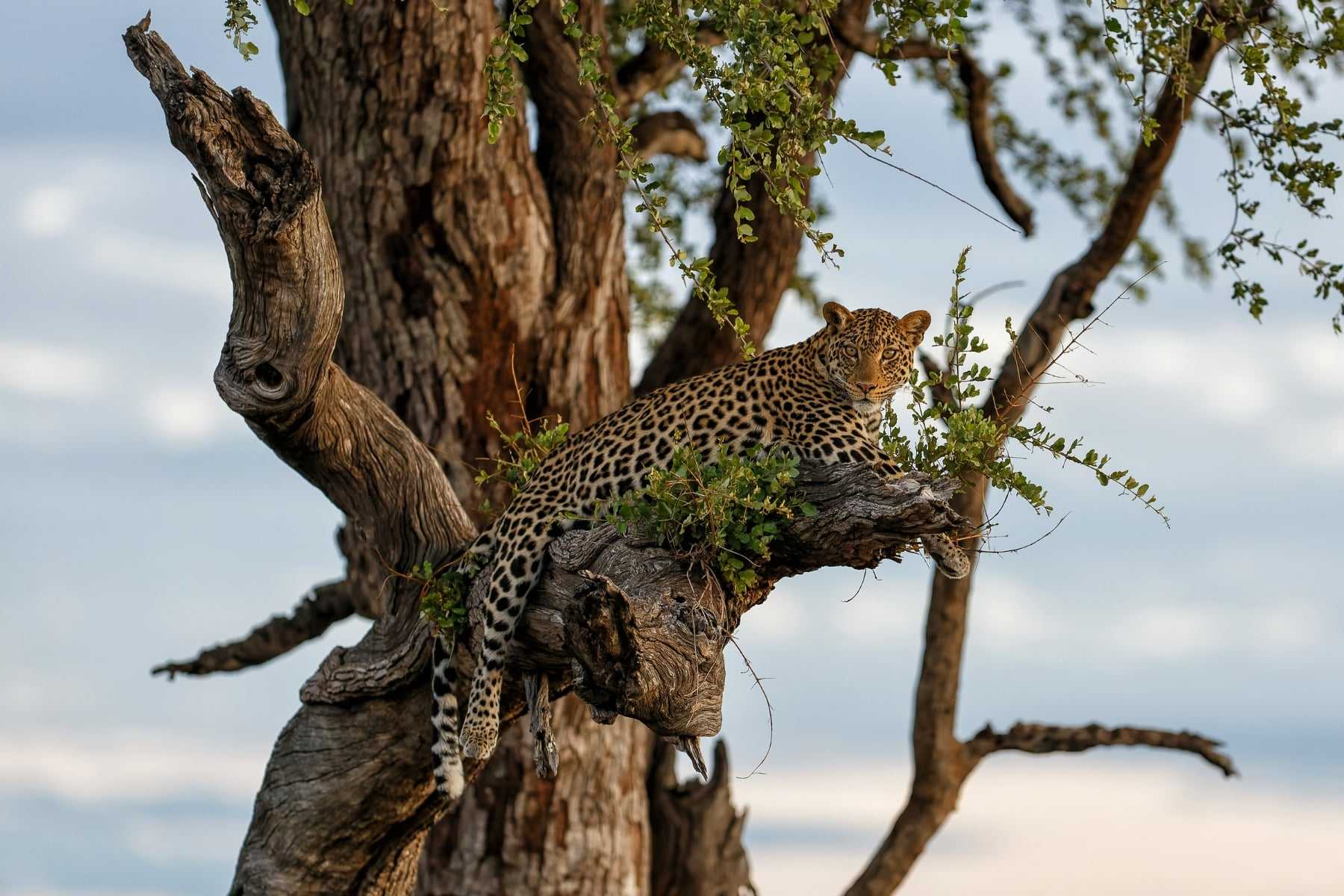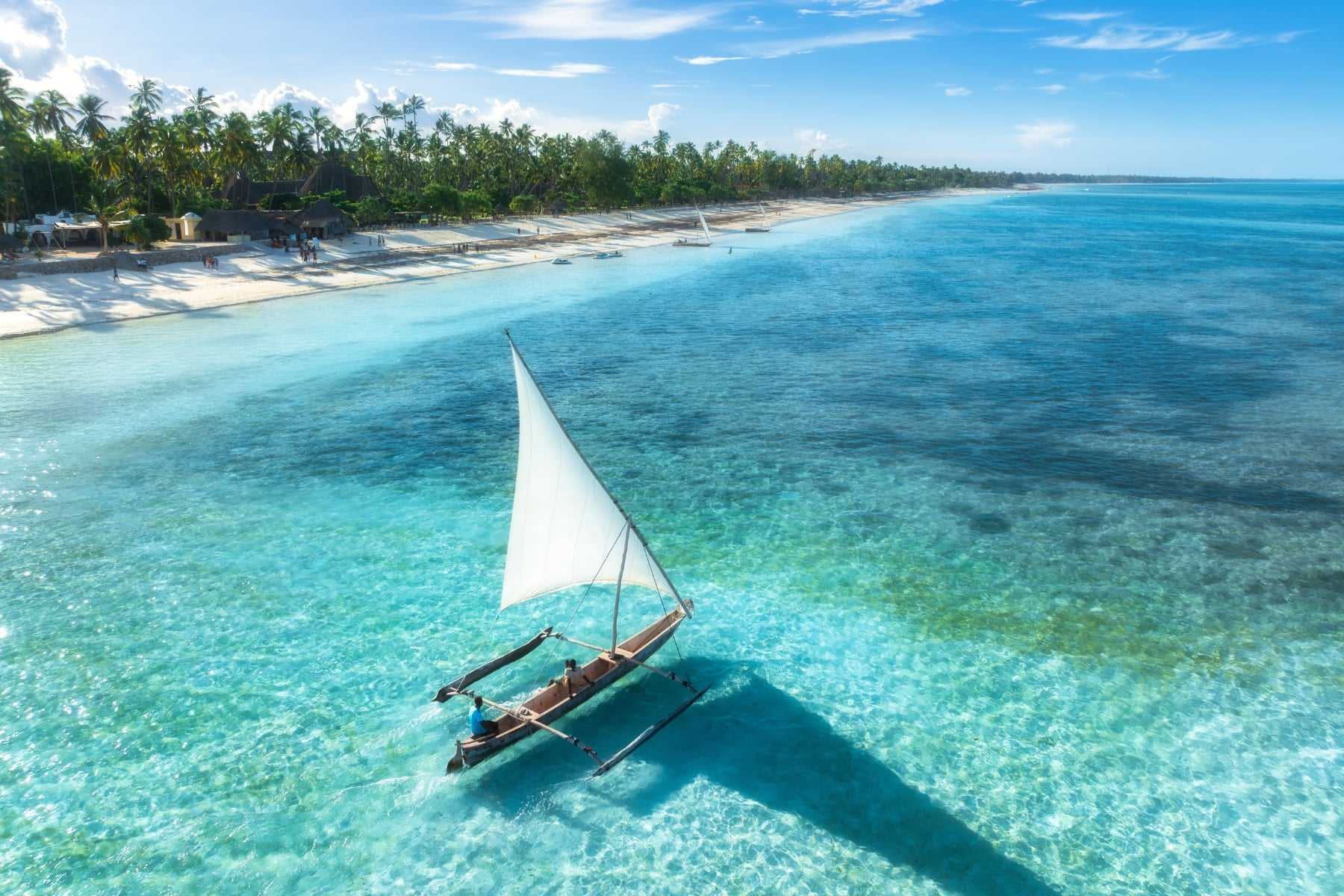At present, the Quirimba Islands are closed for tourism but we will keep you updated as soon as anything changes.
It was a balmy 27 degrees in the ocean, and if I wasn’t holding my breath and steadily running out of oxygen, I could have stayed down in this blue wonderland forever. It must be the magic of the Quirimbas Archipelago.
A tiny orange fish flitted between the colourful anemones swaying in the swell, as I hung, weightless and mesmerised, on the seafloor about 10 meters below the surface.
But the need to breath gently drew me up towards the light. On the surface, a hulking wooden dhow boat bobbed in the water, its great white sails flapping in the warm Mozambique breeze.
The traditional dhow, an ancient Arab boat, was my transport for the day, as I travelled on a marine safari between remote islands in the Quirimbas, exploring some of the best dive spots along the way.
The Quirimbas Archipelago is a set of islands, atolls and sandbanks in northern Mozambique. One of the most attractive features about the archipelago is the fact that it is still relatively undiscovered by commercial tourism, and aside from a few island lodges and fishing towns, there’s little in the way of infrastructure.
This, coupled with stunning marine life, makes diving in these pristine waters some of the best in the world, as I was to find out at the variety of spectacular diving experiences I had along the way.
Diving the wreck
One of our first dive sites in the Quirimbas Archipelago was an old wreck not far from Ibo Island, an old coal steamer vessel that sunk on an exposed reef. Because of the crystal clear waters, they say you can still see scattered pieces of coal, once on the ship over 100 years ago.
As I jumped off the dhow and sunk down to the metal skeleton, the wreck seemed to blend in completely with the environment. The wreck was covered in coral and seaweed, and it was almost as if nature had consumed and transformed it into a natural ecosystem. I swam along one of the steel rim, as thousands of tiny orange fish cleared a way, revealing their beautiful and mysterious world.
Somewhere in the middle of the ship, a large room, perhaps the bridge, jutted out above the rest of the wreck. Holding my breath I was able to dive down and swim through the window, as the thick orange sponge coral clung to the roof of the metal room, and the jellyfish drifted through with the swell.
Diving with dolphins
Our guide and captain, Cosmo, warned us that the dolphins had a youngster in the pod, which might make them a little skittish. So it was with some trepidation and excitement that I slid into the blue water in the hope that the dolphins swimming ahead of the dhow would come close to us.
The water was so clear and blue I could see right down to the sea floor, about 20 meters away, and even further horizontally. If the dolphins were to come close and trust us, we would surely see them. They kept avoiding the boat, though, and every time we swam towards the pod, they would circle round us and disappear.
We were about to give up on seeing dolphins when Cosmo pointed into the blue haze, and there, like a dream, they emerged ahead like silver torpedos. The baby dolphin was swimming right by its mother’s side, and I felt so privileged that these marine mammals had given us a chance to see them; to swim with them.
I managed to get a few photographs of the pod, and then just as quickly as they arrived, they were gone into the blue.
Diving Quilalea Island
Quilalea Private Island is surely one of the most spectacular and isolated of the Quirimbas Archipelago Islands. Littered with large, ancient baobab trees, there are a number of exposed white beaches, that spill out into the warm sea.
And just beyond the shore, a vibrant coral reef thrives.
Coral systems generally grow out in shallow reefs, but Quilalea boasts its own personal house reef just offshore. Unlike many lodges, you don’t need a boat to go diving; one can suit up in the dive hut on the beach and stroll down to the water’s edge before disappearing into the colourful underworld.
Unfortunately, shallower parts of the reef have become degraded because this beach was utilised for centuries by the Arab and Portuguese traders who would pull up their boats for a night of camping before moving on to the next island in the archipelago.
On my final day in the Quirimbas, I donned some scuba gear and swam down a little deeper, away from the beach, where the reef opened up into a magnificent wonderland of colour and life. Thousands of fish flitted between the jagged coral stems, and then, through the murky blue, a turtle floated up to us and waved it’s green flippers; a wonderful goodbye
It was the end of my time in the Quirimbas Archipelago, and I felt as though I’d spent more time in water than outside it. With barmy 27-degree ocean, perfectly clear water, wondrous marine life, and an array of underwater habitats, it’s a wonder why anyone leaves.
